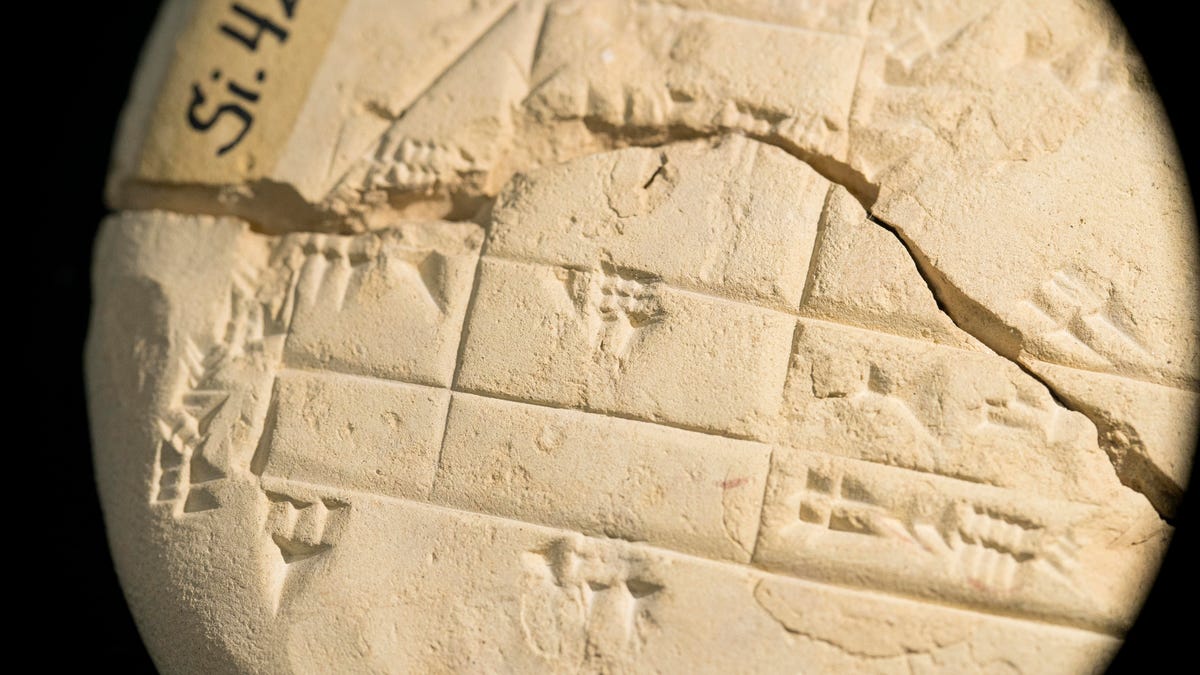3,700-Year-Old Babylonian Clay Tablet Upends History of Mathematics
Long before Pythagoras and his triangles, an ancient Babylonian was etching geometry in clay.

Si.427 is a hand tablet from 1900-1600 BCE, created by an Babylonian surveyor. It's made out of clay, and the surveyor wrote on it with a stylus.
Despite what you may have thought in school, all those numbers and angles really can come in handy -- something that even surveyors in ancient Babylon knew.
The etchings on the clay tablet pictured above reveal that people have been using geometry in everyday life for centuries longer than many have assumed. The tablet is known as Si.427, and it dates back to the Old Babylonian Period between 1900 and 1600 BCE.
The tablet is basically a land survey that maps out boundary lines, but the surveyor demonstrated a surprising level of knowledge by using what we today call "Pythagorean triples" to make precise right angles. If you paid attention in trigonometry class, you might remember this as the classic 3-4-5 triangle that creates mathematically perfect right angles.
"The discovery and analysis of the tablet have important implications for the history of mathematics," University of New South Wales mathematician Daniel Mansfield said Wednesday in a statement. "For instance, this is over a thousand years before Pythagoras was born."
So centuries before the ancient Greeks built their most famous monuments and before scholars like Pythagoras dropped scientific knowledge that I used to build a gloriously straight and square outhouse last summer (my weird pandemic project), it turns out the ancient Babylonians already had dialed up some of that know-how.
"It is generally accepted that trigonometry was developed by the ancient Greeks studying the night sky in the second century BCE," Mansfield says. "But the Babylonians developed their own alternative 'proto-trigonometry' to solve problems related to measuring the ground, not the sky."
The ancient surveyor managed to be precise by using Pythagorean triples, making the boundary lines truly perpendicular.
Interestingly, Si.427 wasn't a new find. It was actually on display at a museum in Istanbul. Mansfield learned of its existence from reading excavation records of an expedition that took place in 1894 in modern day Iraq.
"It was a real challenge to trace the tablet from these records and physically find it," he said. "The report said that the tablet had gone to the Imperial Museum of Constantinople, a place that obviously doesn't exist anymore."
Once Mansfield tracked the object down, it took months to decipher its significance, which is laid out in full detail in a study published Wednesday in the journal Foundations of Science.
There is one mystery that remains with the ancient document: The number 25:29 is written in Old Babylonian base 60 on the back.
"I can't figure out what these numbers mean," Mansfield said. "It's an absolute enigma. I'm keen to discuss any leads with historians or mathematicians who might have a hunch as to what these numbers trying to tell us."

